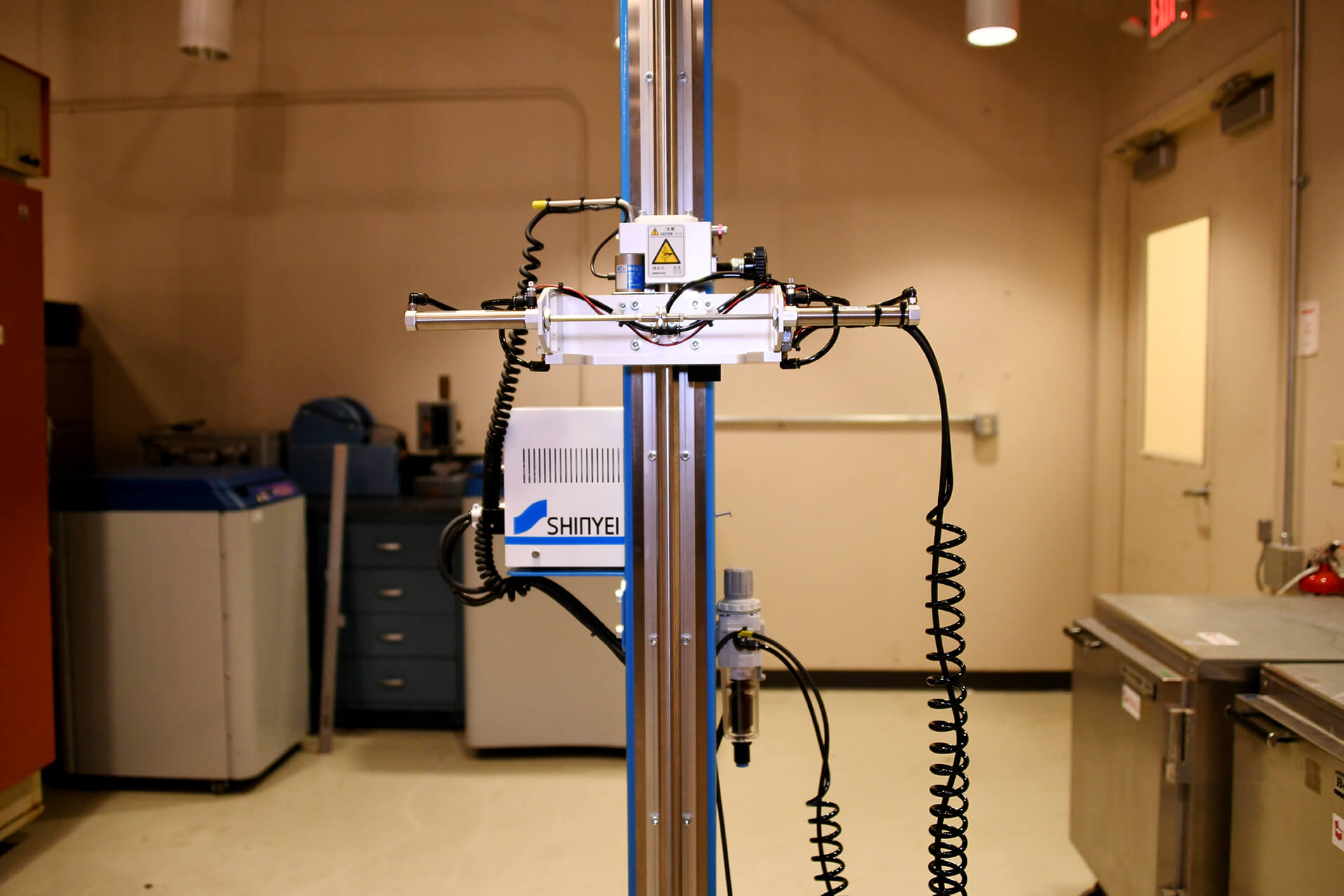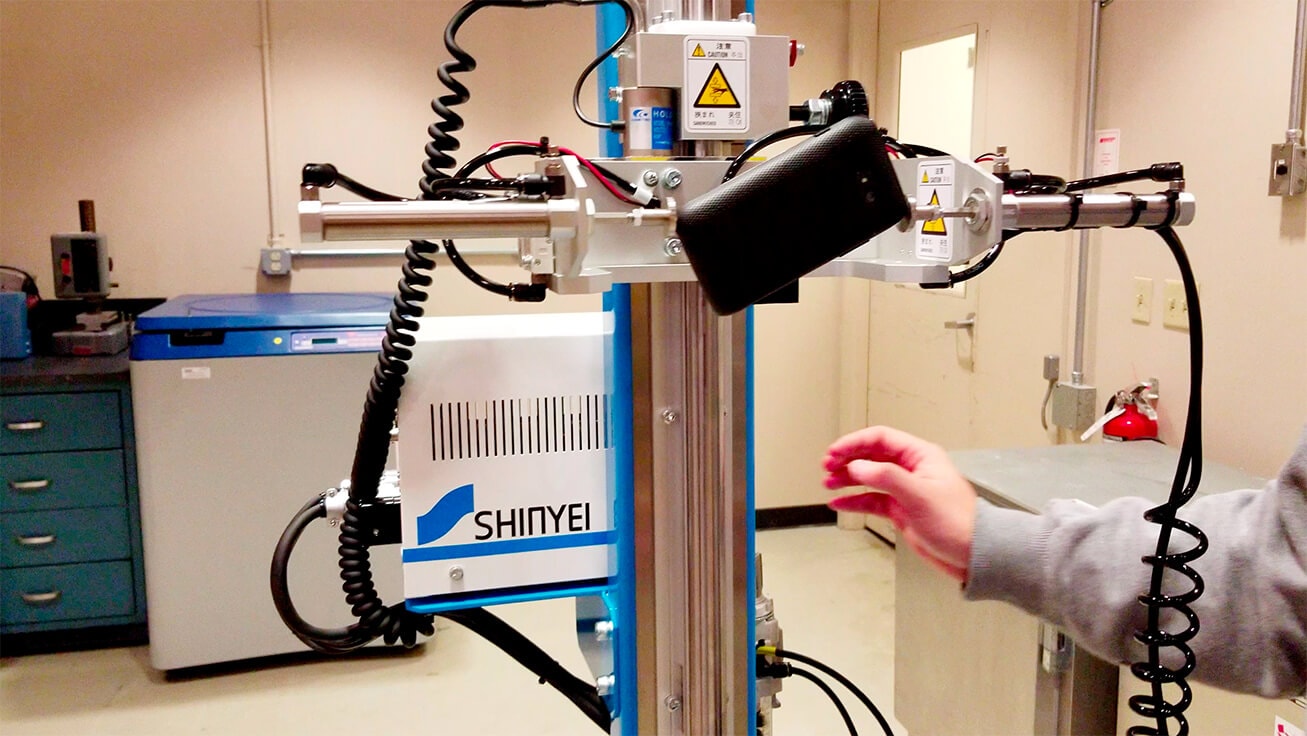Rutgers University professors reviewed DT-202
Two distinguished professors at Rutgers University has shared their thoughts on the DT-202 drop tester, made by Shinyei Testing Machinery. The prestigious school has a Packaging Program under their engineering department, where the DT-202 is used for research in packaging design and analysis.
Dr. Hae Chang Gea is currently the Chair and Professor of Rutgers Packaging Department. He joined the department eight years ago and started teaching mechanical engineering design in the same university 25 years ago, as he oversaw the growth in design and analysis of the packaging field.
He explains that the DT-202 is a unique equipment in its capability to conduct freefall drop tests with fixed orientation of the specimen and controlled height, which allows the standardization of data taken by said drop tests. Currently, he uses the DT-202 to study distribution of force on the specimen and as well as other aspect of the shock impact of the drop test. He claims that the DT-202 help solve the problem of difficulty in achieving repeatability of drop tests.

He noted that DT-202 offers impeccable repeatability of tests, where one can replicate results from one unit to another making it easy to compare data between different units and location. Unlike a digital simulation where the results are the same every time with a given factor, there still is a need for physical drop tests to find external factors that may cause spins and torques of the specimen during the test. The DT-202 also has an option to be connected to high speed cameras to synchronize the timing of the test with the video captured.


Dr. Gea said that the control drop feature of the machine is a unique function that he has not seen from any other drop testing units. He feels that the unit will see increasing popularity with in many fields. Notably for mobile device and accessories, pharmaceutical and beauty companies because they often have a need to handle and transport delicate products. Cosmetic companies will benefit from this unit not only in the packaging design but also for design of the actual product casings.
Dr. Gea is expecting to see the machine improve to hold larger capacity specimen and in time and effort reduction to perform multiple drop tests. With the current testing standards performing multiple drop test manually is both time-consuming and lacks credibility.
The DT-202 can cut down on testing time which will consequently save labor costs while producing valuable data with more precision at the same time.
Euihark Lee, associate director/assistant professor in the packaging department for six years already and his recent research involves origami application in packaging. He is designing origami patterned paper packaging that would serve as cushioning in place of conventional styrofoam packaging. For him, DT-202 has proven to be helpful for his research because they can control the drop orientation of the specimen. Using the DT-202, he claims that he can pinpoint every aspect of the impact of the drop test has on both the packaging material and the product inside the packaging. Mr. Lee recommends this unit to be used for small electronics such as cellphones, external drivers and similar electrical appliance. He states that DT-202 has allowed him to remove human errors which was present in manual drop testing which has being performed up until now, and was able to concentrate on the evaluation of test results instead of focusing on how the test itself is performed.
The two professors both agree that the DT-202 has the features necessary to standardize the drop testing, and can be used as a reference point for many industries. Whether it be to test the integrity of a product, find out whether a packaging method is sufficient for their needs, or to test ideas for new products, DT-202 will find its place in one’s asset.